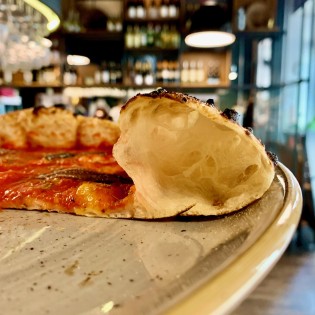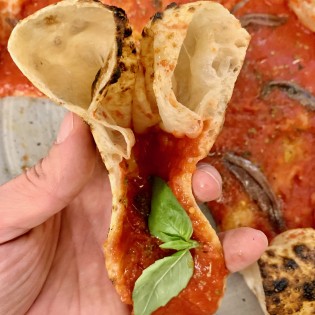The story of the real Neapolitan pizza
One of the most famous dishes of Italian cuisine and a real feast for the eyes and stomach – "Neapolitan" pizza – has long and firmly conquered the world.
Like many other Italian delicacies, from wine and olive oil to cheese, the pizza from Naples, where the food was born, is protected by the "Denominazione di Origine Controllata" logo and its tradition of preparation is recognized as an intangible UNESCO World Heritage Site.
The center of Neapolitan pizza is, of course, Naples, where entire families of pizza makers (pizza masters) have perfected the art of making it for generations.
Each family passionately guards the secrets of their recipe as well as bake their pizza with a passion that can only be compared to the Neapolitans' love for football.
A bit of history:
Pizza allegedly dates back to the 17th century, when travelers brought one of the most important ingredients from Peru – tomatoes.
But the Neapolitans still ate its predecessor – a round flat bread pita brought to Italy by Arab immigrants, which only later became "pizza" in the local dialect.
European aristocrats initially looked at tomatoes with suspicion, considered them poisonous. From sour vegetables and fruits, pewter dishes used at the time could excrete lead and cause disease.
But during the famine, the Neapolitans began putting tomatoes on their fresh pita bread, and the dish soon became the basis of local cuisine.
The creation of the famous "Margarita" is attributed to the baker Raffael Esposito. According to historians, he prepared the food in honor of the visit of Queen Margherite of Savoy, wife of King Umberto I, shortly after the unification of Italy in 1889.
The ingredients of the dish reflect the colors of the Italian flag: red tomatoes, white cheese and green basil. The legendary dish was born.
Neapolitan pizza and classic crunchy pizza Romana are very different from each other!
There are still two main pizza camps you need to know about if you really want to understand Italian pizza: Roman and Neapolitan style. The difference is apparent on the crust of the pizzas - Italian: cornicione.
Roman-style pizza is a huge pizza with a crispy crust as thin as a sheet of paper. Its ingredients almost always cover the entire area of the pizza leaving only the smallest crust to be held. The dough differs significantly and is prepared at lower temperatures, around 320-350°C for about 3 minutes. It is made of flour, water, yeast, salt and olive oil, which is essential to add more weight to the dough and to allow the pizza to be stretched to its final ultra-thin shape.
The dough for Neapolitan pizza contains 65% to 70% water and matures for up to 48 hours, which makes the pizza softer and more digestible. It is only made of flour, water, yeast and salt (without olive oil), which gives it a characteristic fluffy consistency. Its ingredients are concentrated in the middle and the pizza itself is much smaller than Roman pizza. On Neapolitan pizza cornicione we usually find an airy and raised crust, which is crispy on the outside and light and soft on the inside. According to the international standard AVPN (The True Neapolitan Pizza Association) for Neapolitan pizza, real Neapolitan pizza should have a raised crust of 1-2 cm (about 0.5 inches). Cornicione serves as an identifying feature of Neapolitan pizza and thus has a long tradition in Naples.
Neapolitan pizza is prepared in special certified ovens at a temperature of 435 to 465°C for about 60-90 seconds. Our Valoriani oven is one of the few ovens that can handle these temperatures and is therefore certified by the Naples Pizza Association.
Neapolitan pizza has two main types:
"Margarita" – with tomato sauce, mozzarella and fresh basil and "Marinara" – tomato base, no cheese and oregano and garlic are added instead of basil.
During maturation, air pockets and bubbles form in the dough – the result of yeast working with flour.
At such extreme temperatures in the oven, air bubbles nearly explode on the crust of the dough, leaving black dots that are not only visually significant but also in terms of taste. In Italy such pizza surface is correctly referred to as "leopardo".
For example, Mr. Peyton Smith of Mission Pizza Napoletano in Winston-Salem, North Carolina, a so-called "pizza geek," argues that charring is "absolutely essential to complete the taste of the entire pizza."
The dark spots are a bit bitter, which compensates for the sweetness of tomato sauce, milk mozzarella and fresh basil.
The GamberoRosso team wishes you to enjoy your meal!




